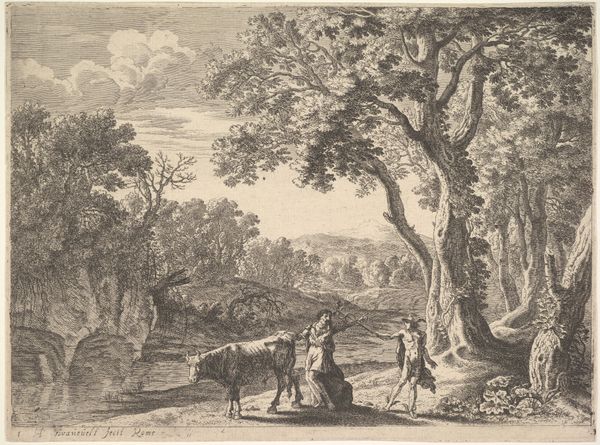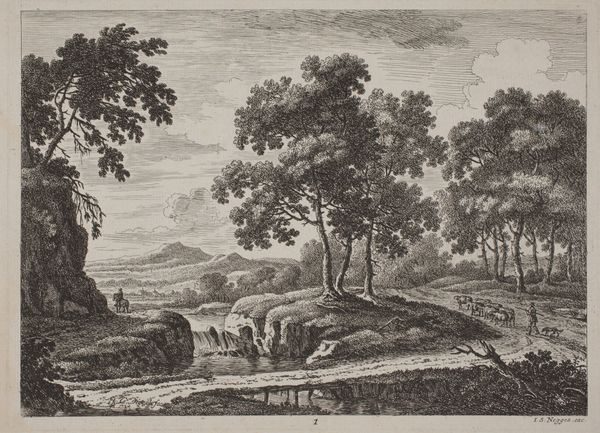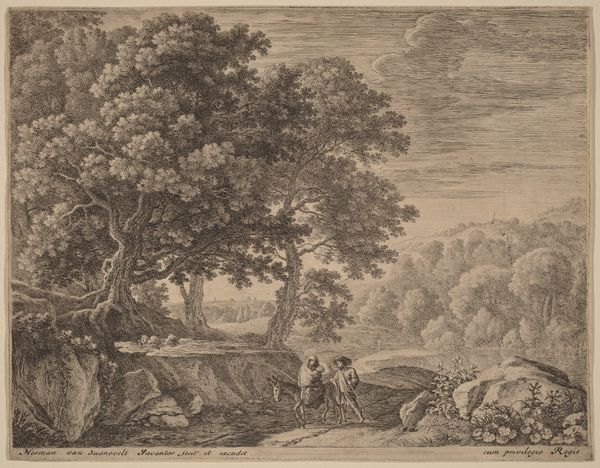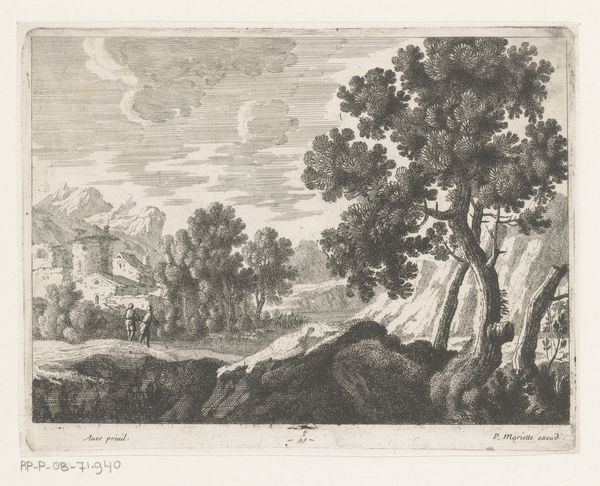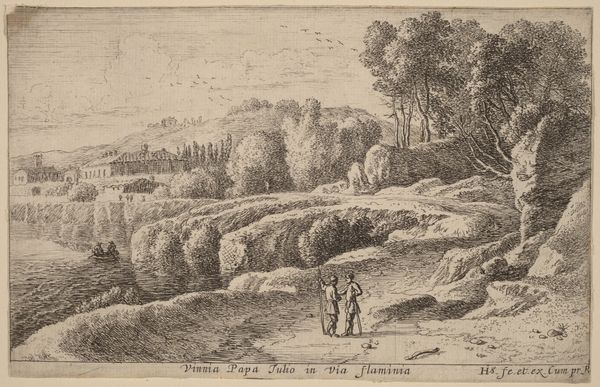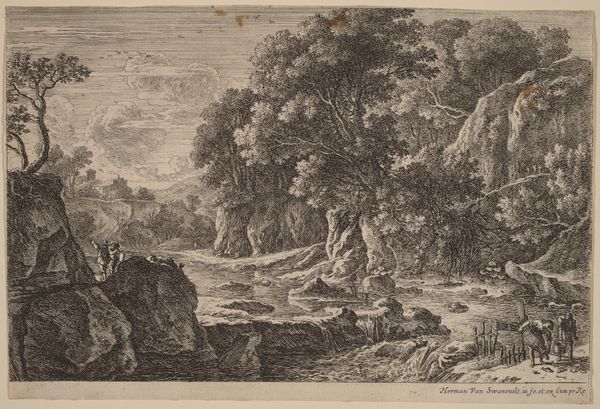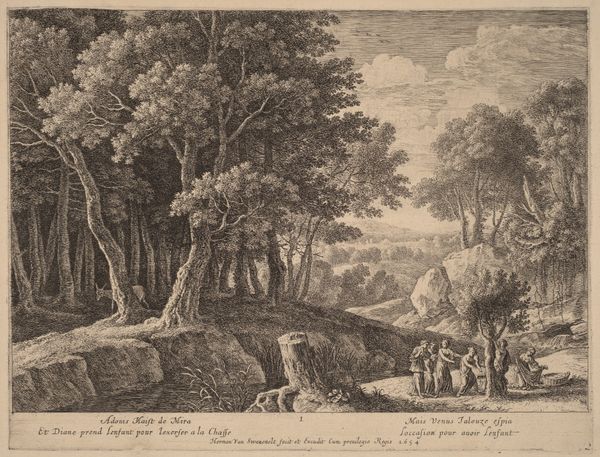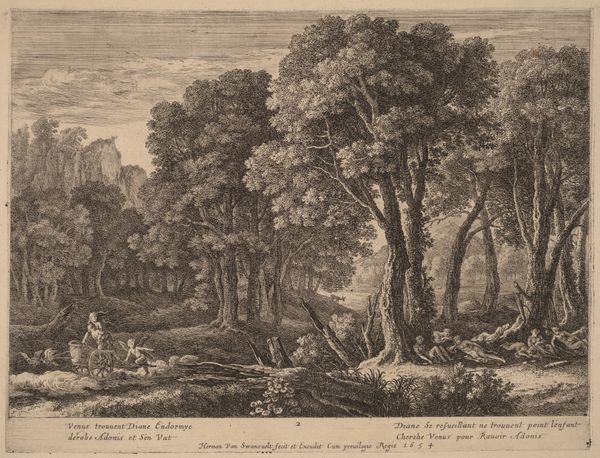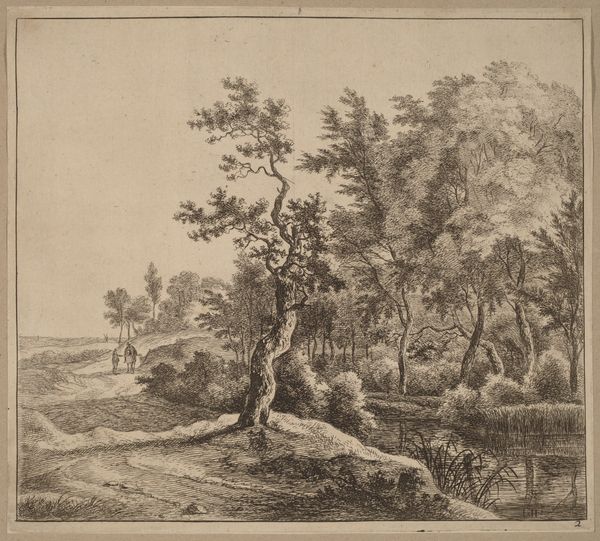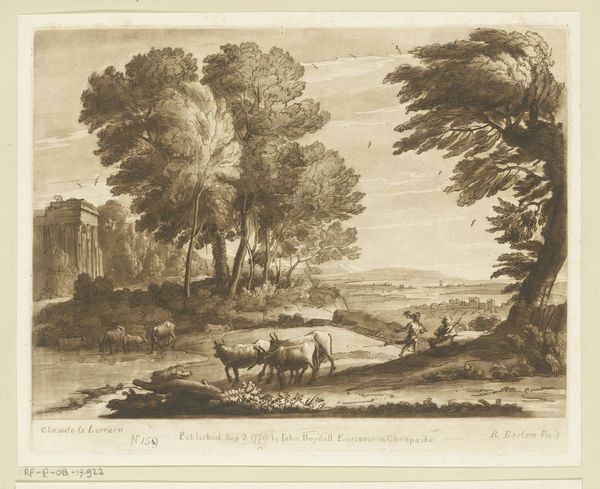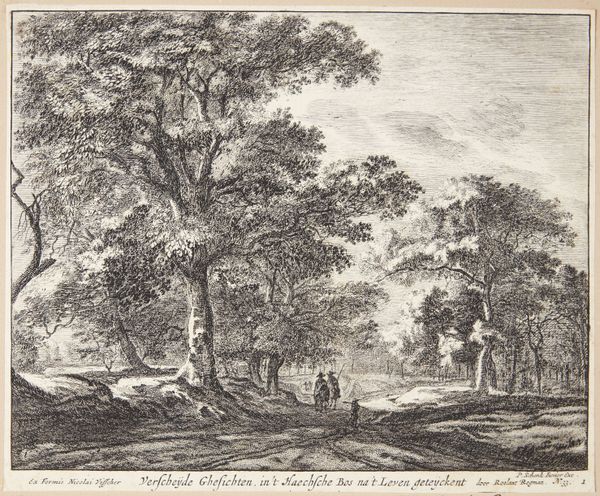
print, etching, engraving
#
pencil drawn
#
baroque
# print
#
etching
#
landscape
#
figuration
#
line
#
engraving
Copyright: National Gallery of Art: CC0 1.0
Editor: Here we have "Second View of Zugro," an etching by Herman van Swanevelt. The detail is incredible; you can see every little line. It’s… rustic. Very evocative of the countryside, but there's something melancholic about it. What catches your eye when you look at this piece? Curator: The clear technical skill deployed here is definitely remarkable, especially when thinking about printmaking as a mechanical reproduction of art. Etching allowed for wider access to landscape imagery, previously enjoyed almost exclusively by the upper classes who commissioned paintings. This print collapses the boundaries between high art and accessibility through materiality and its means of production. Editor: So you're saying that the *process* of etching democratized landscape art? Curator: Precisely. Consider also the depicted figures, almost certainly representing agricultural laborers. They're small in scale, almost footnotes, to the land and, yet, integral to understanding this "view". Does the work, in your view, romanticize or realistically portray this relationship? Editor: That’s a good point! I think it does both, right? It highlights the idyllic nature, but includes the workers. There’s definitely something complex in there. The labor isn't hidden, but is it properly recognized? Curator: Exactly! What’s fascinating is thinking about who this print was marketed to. Was it to landowners celebrating their domain, or urban dwellers yearning for the countryside and perhaps ignorant to the realities of agricultural labor? The materiality of the print, the *paper* it’s printed on, speaks to the rise of a print market, which helped determine artistic choices like subject matter. Editor: Wow, I hadn't considered how the simple *fact* that it’s a print shaped the whole meaning and reception. I'm learning a lot about considering art in terms of how it was made, sold, and seen, and how social context impacts everything. Curator: It is a different way of viewing art, but focusing on material and process really unlocks a greater understanding.
Comments
No comments
Be the first to comment and join the conversation on the ultimate creative platform.
